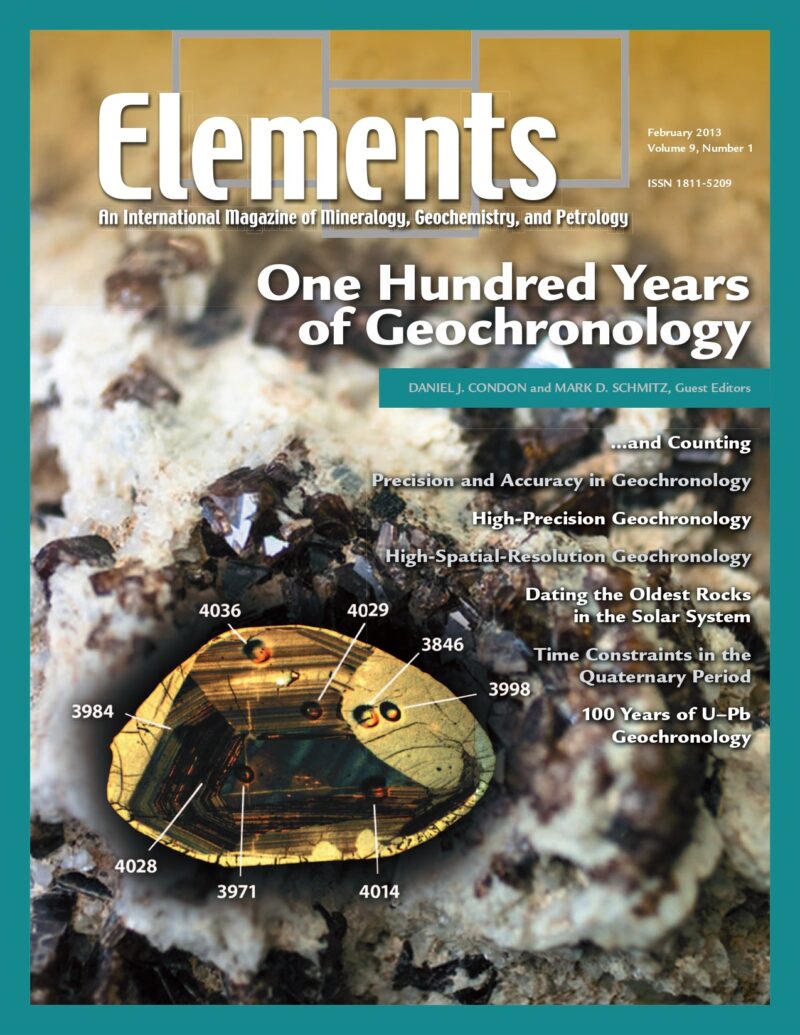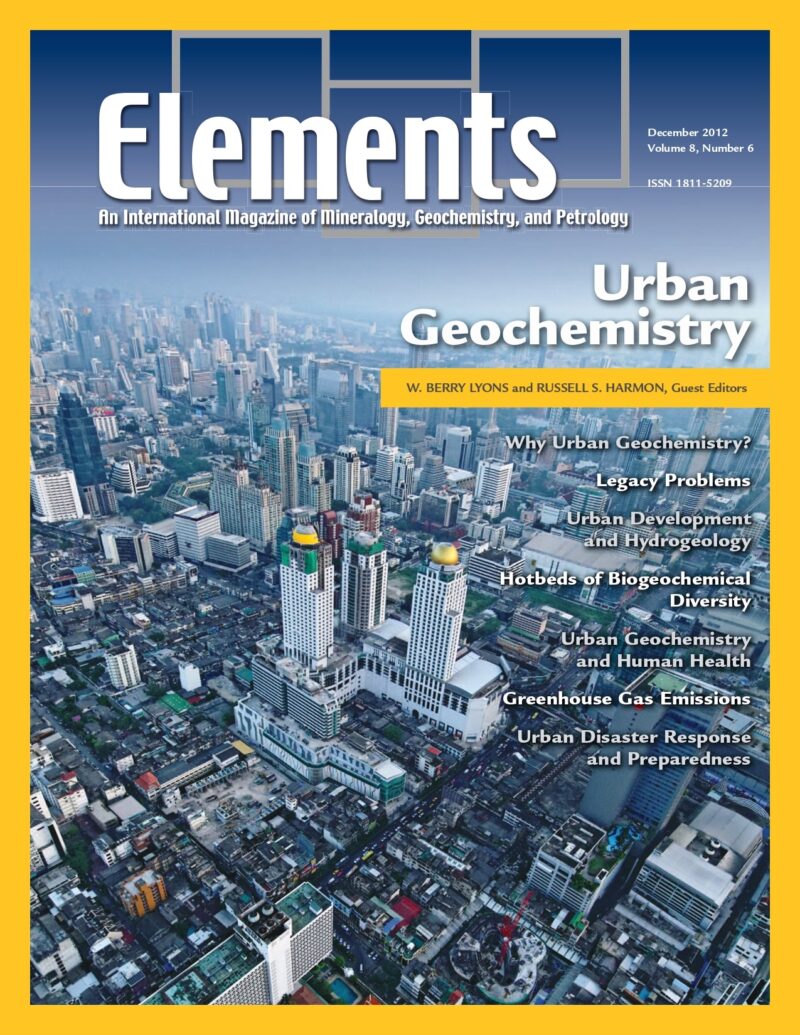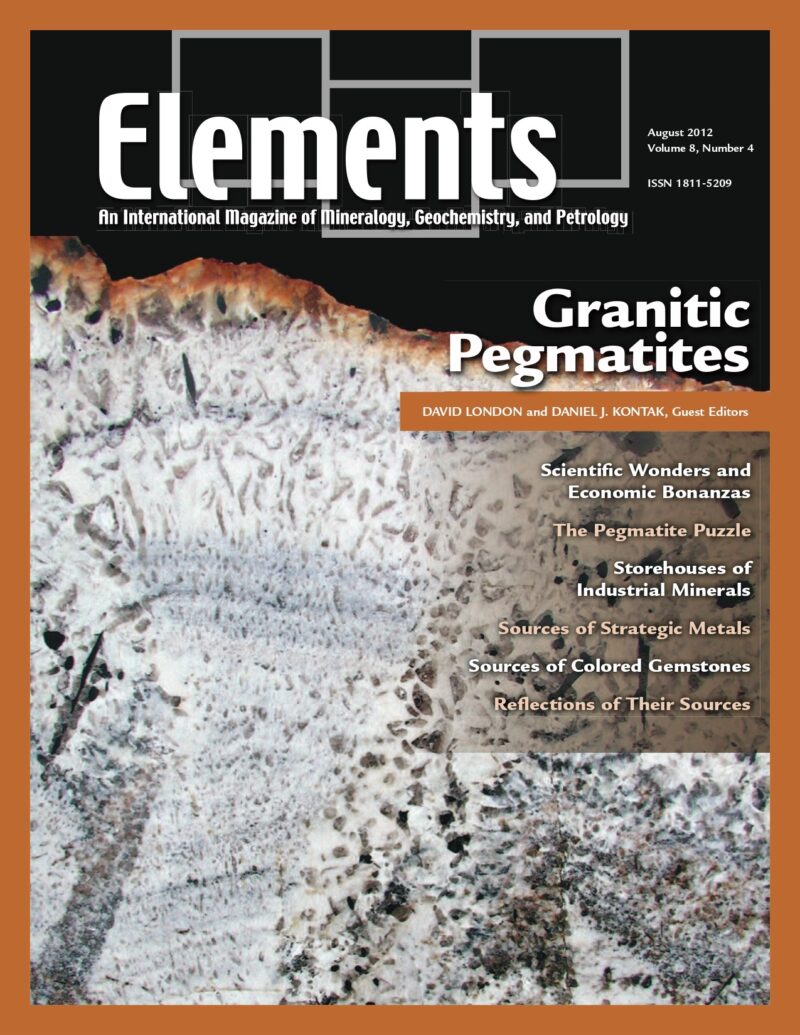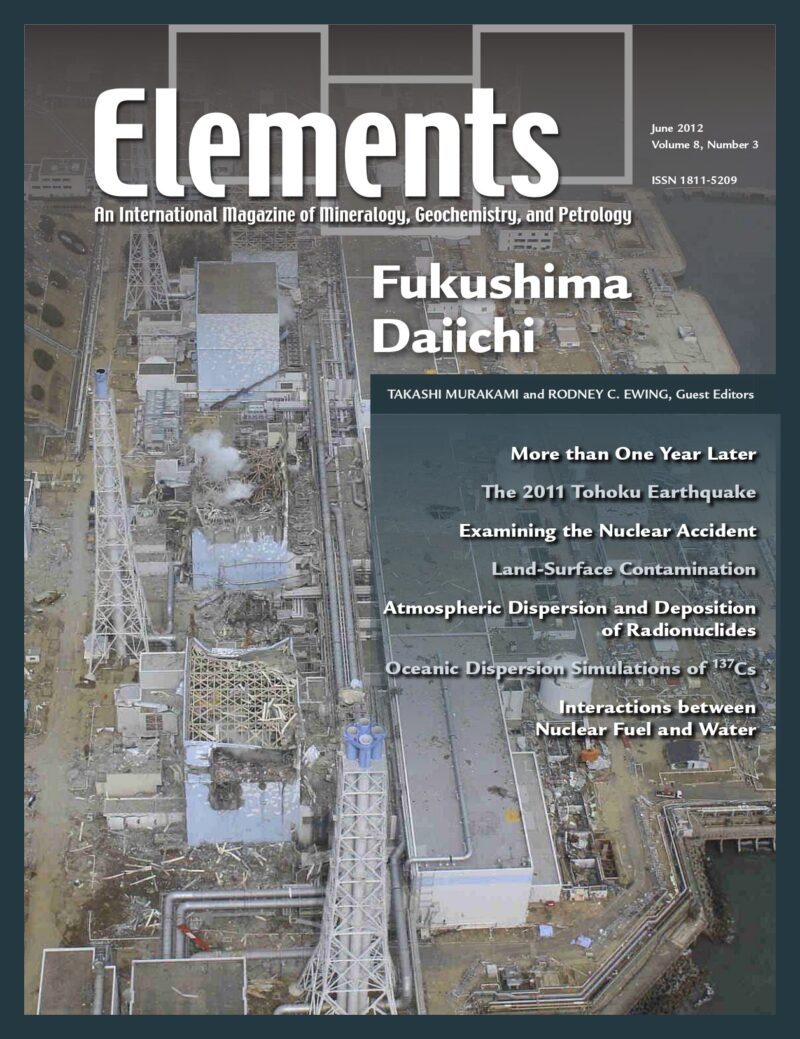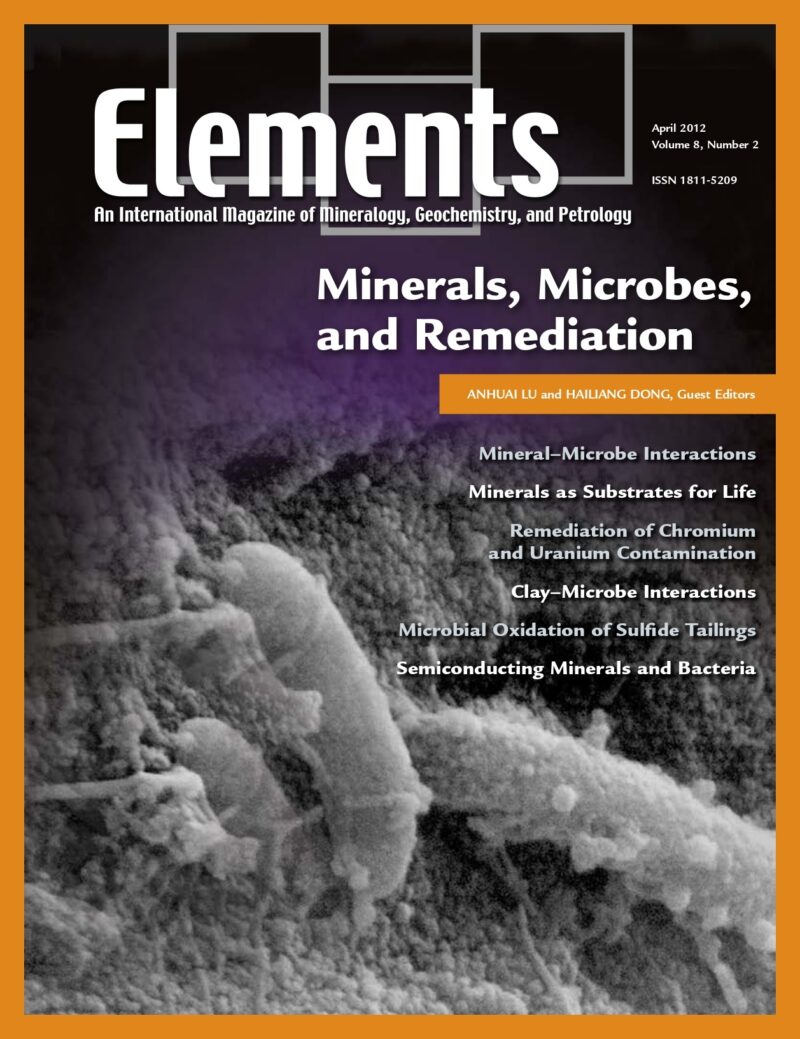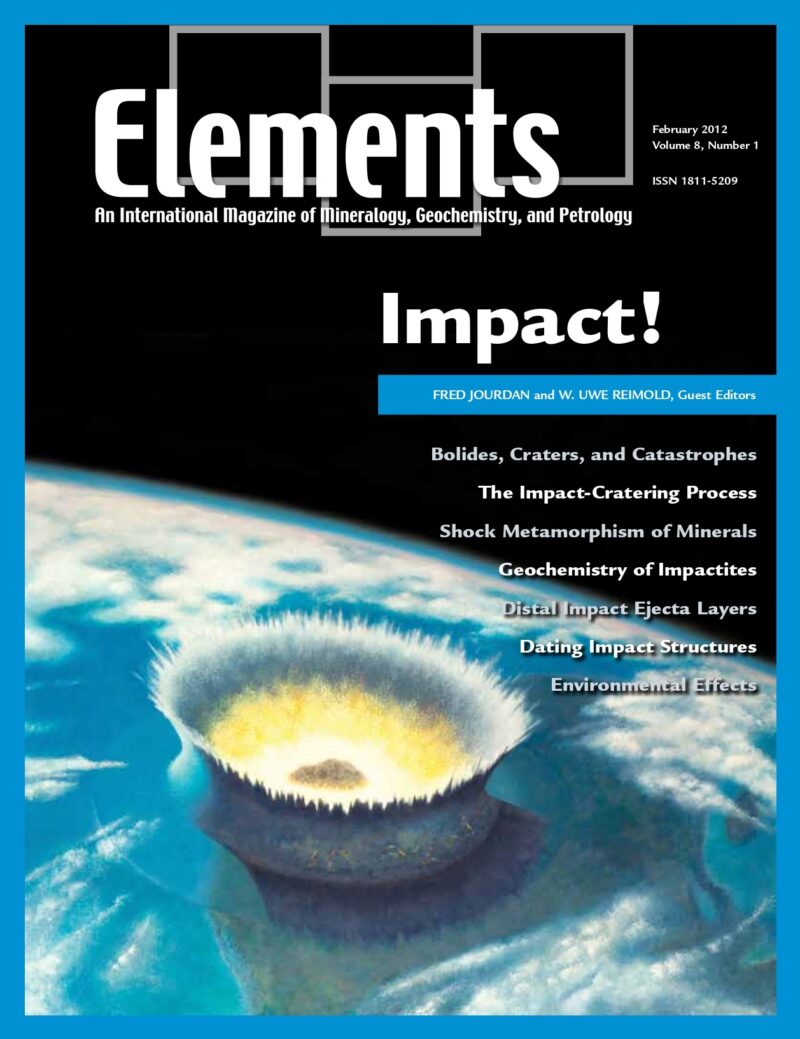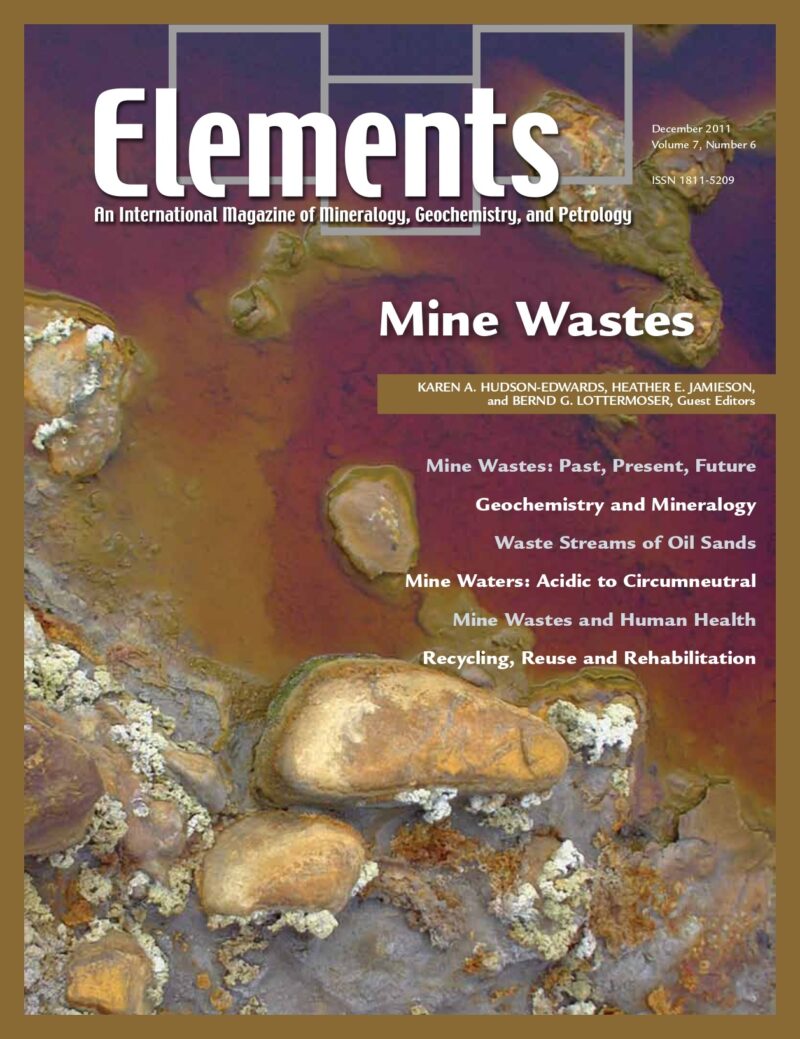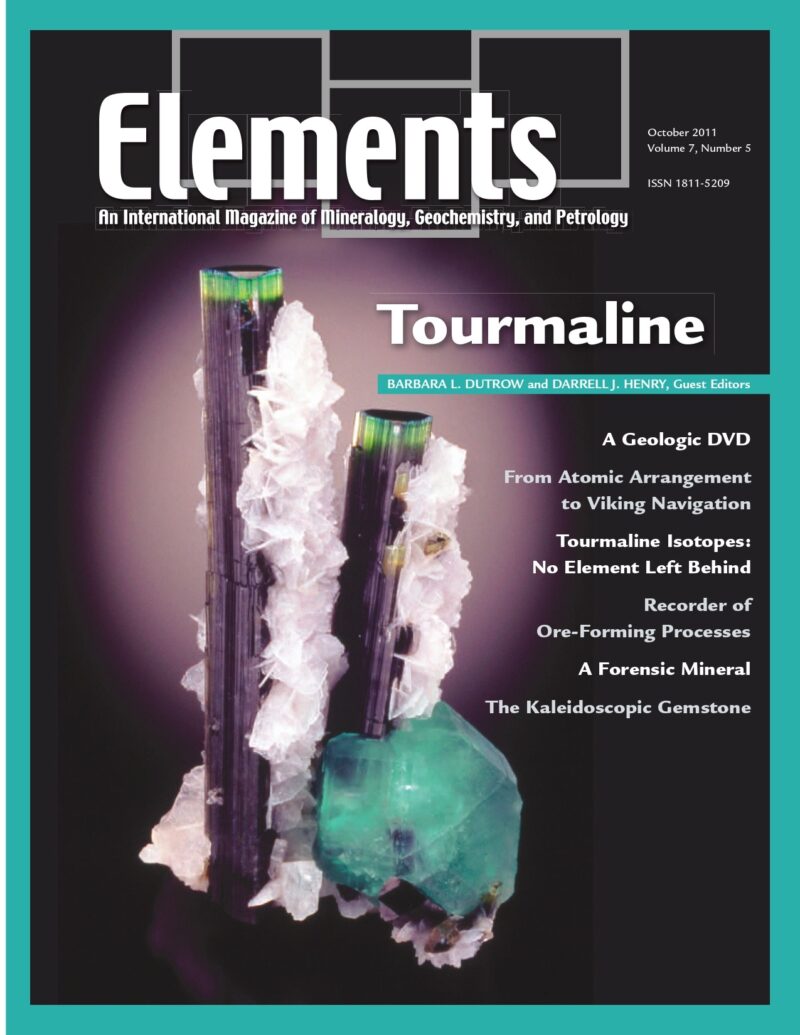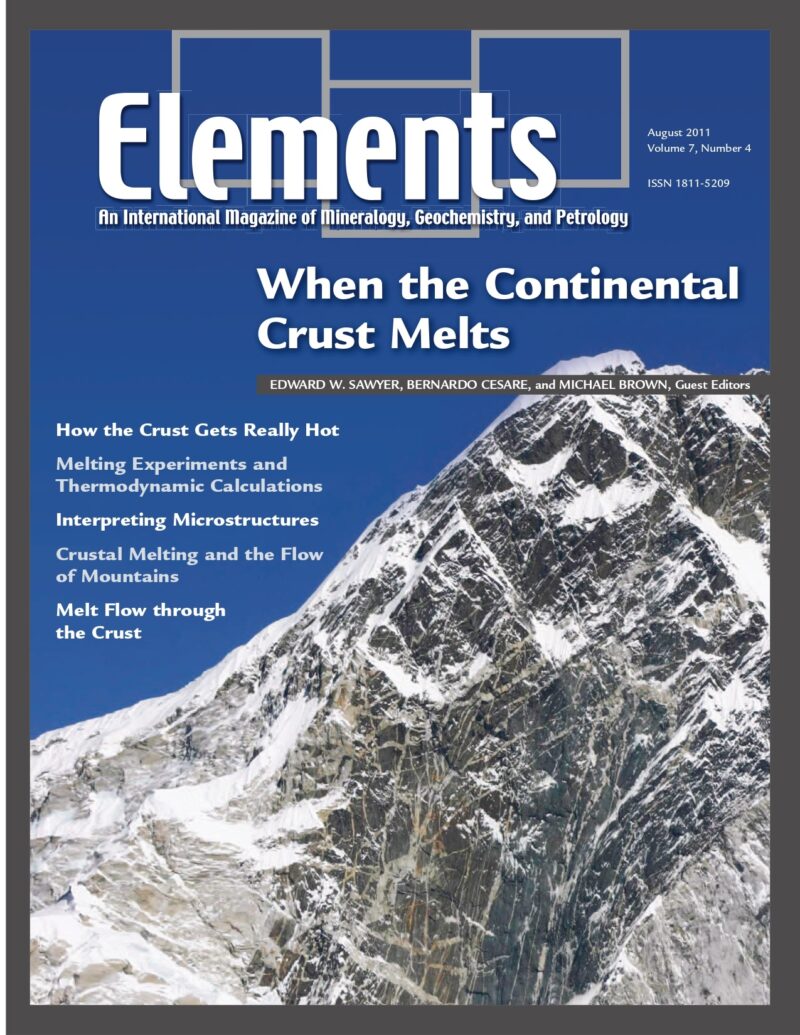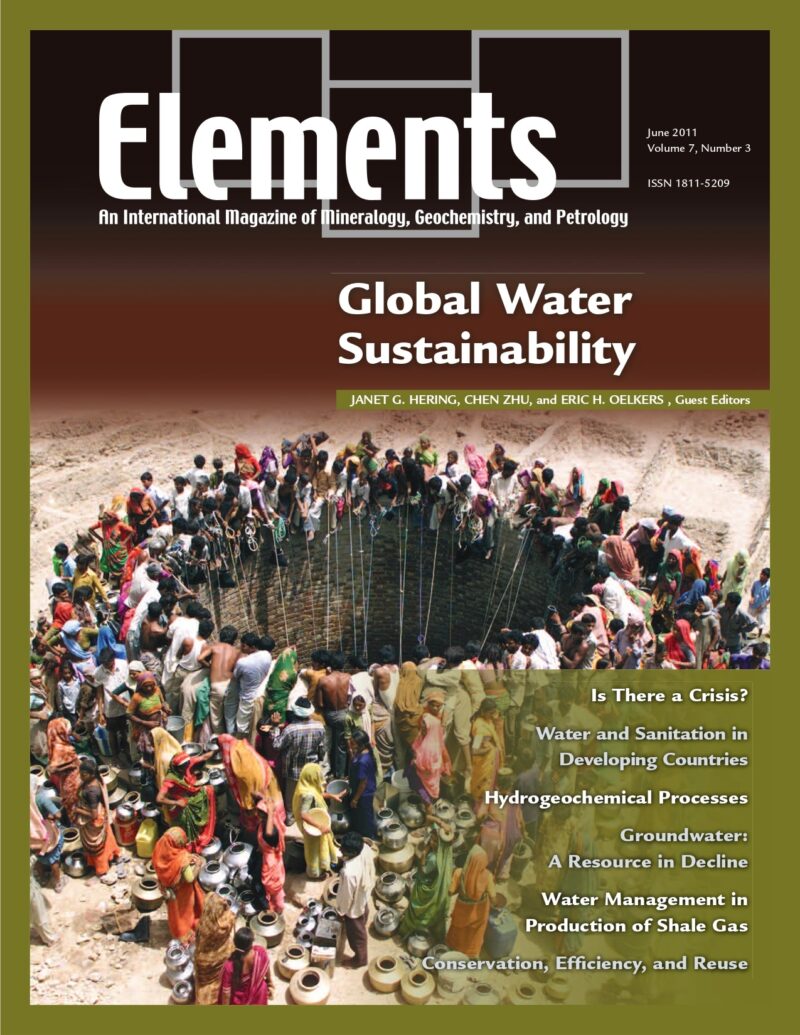-
Serpentinites, April 2013, Vol. 9, No. 2
$20.00Serpentinites, primarily composed of serpentine minerals and formed by hydration of peridotites, increasingly attract the attention of a wide range of scientists, including geophysicists, structural geologists, engineers, and astrobiologists. As serpentinites have wide stability fields, they form in a variety of environments, from the Earth’s surface to the interior of the mantle.
-
One Hundred Years Of Isotope Geochronology, February 2013, Vol. 9, No. 1
$20.00In 1913, Frederick Soddy’s research on the fundamentals of radioactivity led to the discovery of “isotopes.” That same year, Arthur Holmes published his now famous booklet The Age of the Earth.
-
Urban Geochemistry, December 2012, Vol. 8, No. 6
$20.00By 2030, about 60% of the human population will live in cities. Clearly, anthropogenic activities in urban environments affect geochemical cycles, water resources, and the health of ecosystems and humans globally.
-
Rare Earth Elements, October 2012, Vol. 8, No. 5
$20.00Rare earth–based materials have practical applications in transportation, renew able energy, medicine, household items, visual arts, forensic science, and defense, and thus are essential to the progress of humankind. The rapid development and implementation of innovative and green technologies in the past decade have resulted in greatly increased demand for rare earth elements (REE).
-
Granitic Pegmatites, August 2012, Vol. 8, No. 4
$20.00Nothing that geoscientists learn as students prepares them for interpreting rock textures as complex as those found in pegmatites. Understanding the textures and mineral zonation of granitic pegmatites is tantamount to understanding the fundamental process of crystallization.
-
Fukushima Dai-Ichi, June 2012, Vol. 8, No. 3
$20.00On March 11, 2011, an earthquake and tsunami hit Japan, killing more than 20,000 persons, displacing tens of thousands, and causing havoc in the infra structure and economy of the country. In the aftermath of this tragedy, the cooling systems of three of the operating reactors at the Fukushima Daiichi nuclear power station failed and meltdown of the reactor cores occurred.
-
Minerals, Microbes, And Remediation, April 2012, Vol. 8, No. 2
$20.00Studies of mineral–microbe interactions lie at the heart of the emerging field of geomicrobiology, because minerals are the fundamental Earth materials with which microbes interact. Microbes are found in a number of the Earth’s extreme environments and also in extraterrestrial materials.
-
Impact!, February 2012, Vol. 8, No. 1
$20.00Impact processes are central to the formation and evolution of the Solar System and the modification of planetary surfaces. On Earth, asteroid impacts played a critical role during Earth history; they delivered the constituents of our planet, were responsible for the formation of major ore deposits, and affected life on Earth.
-
Mine Wastes, December 2011, Vol. 7, No. 6
$20.00Since the dawn of civilization, humankind has been extracting metals and minerals for the production of goods, energy, and building materials. These mining activities have created great wealth, but they have also produced colossal quantities of solid and liquid wastes, known collectively as “mine wastes.
-
Tourmaline, October 2011, Vol. 7, No. 5
$20.00From the Vikings’ sunstone to a modern piezometric pressure sensor, tourmaline is an intriguing mineral with a new degree of significance. Tourmaline was considered by 18th century physicists as the key to a grand unification theory relating heat, electricity, and magnetism, but new studies define its role as an indicator of Earth’s processes.
-
When The Continental Crust Melts, August 2011, Vol. 7, No. 4
$20.00Partial melting is the most important process affecting the continental crust. It is responsible for the large-scale compositional and density structure that has stabilized the crust over geological time.
-
Global Water Sustainability, June 2011, Vol. 7, No. 3
$20.00The term water resources refers to natural waters (vapor, liquid, or solid) that occur on the Earth and that are of potential use to humans. These resources include oceans, rivers, lakes, groundwater, and glaciers.


